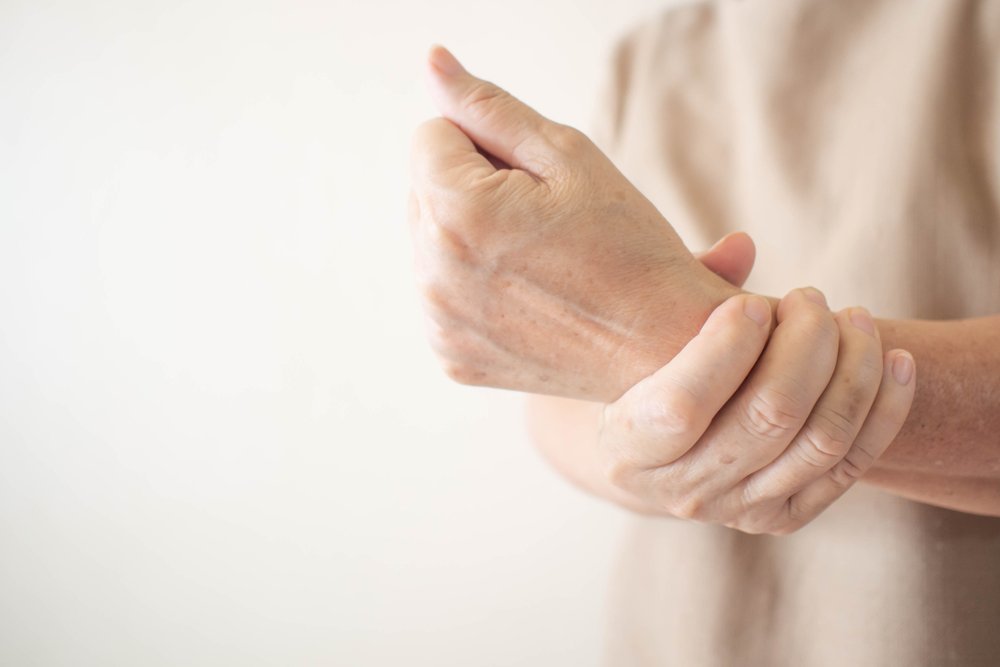Arthritis of the Thumb
What is Arthritis of the Thumb?
Arthritis, in general, is a condition that affects the tissues inside your joints. Arthritis of the thumb can make it difficult to perform daily tasks like opening doors, as the thumb is subjected to severe swelling and decreased strength.
A normal thumb has a layer of cartilage covering the ends of the bones, letting the bones glide against each other with ease. Those with arthritis, however, are missing some (if not all) of this cartilage, causing the bones to rub against each other, which can damage the joint.
Some patients may notice lumps on and around the thumb joint. These lumps are the results of new bone growth at the sides of the current bone, also known as bone spurs.
Whom Does Thumb Arthritis Affect?
While anyone can develop thumb arthritis, older patients (particularly those over 40) are more likely to experience the condition than younger individuals. Those who have previously suffered a thumb injury may also be at an increased risk of arthritis.
There are several other risk factors that can contribute to the presence of thumb arthritis. Females are more likely to develop the condition than males, for instance. Individuals in careers requiring excessive stress on the thumb joint could also develop arthritis. Finally, patients who are obese, have hereditary conditions like malformed joints, and those who have other forms of arthritis (such as rheumatoid arthritis) could be at an increased risk of thumb arthritis.
What are the Symptoms of Arthritis of the Thumb?
Thumb arthritis symptoms are first characterized by pain in the thumb. This pain can be centered at the base of the thumb (where it meets your hand) when you attempt to grip an object or apply force with your thumb.
You may also notice that the base of your thumb has become swollen and stiff, decreasing your range of motion in the thumb. The joint at the thumb’s base could become enlarged or bony looking. Finally, you may notice that your thumb is not as strong as it once was, particularly when grabbing or pinching objects.
If you notice any of these symptoms on a consistent basis, it’s recommended to speak with a joint doctor.
How is Arthritis of the Thumb Treated?
If your arthritis is diagnosed early on, you’ll usually see significant results from nonsurgical treatment methods. First, your doctor may recommend the use of over-the-counter pain relievers like Tylenol or Advil to reduce your pain. Topical medications like diclofenac or capsaicin may also help.
Your doctor could also offer a splint as a form of thumb arthritis treatment. A splint could be worn all day long or just at night, depending on the severity of your condition. Wearing a splint allows your joint to rest in its proper position, decreasing pain while still allowing you to go about your daily tasks.
Arthritis of the Thumb Surgical Treatment Options
For more severe cases of thumb arthritis, surgical treatment may be necessary. Surgery is typically only considered for those whose conditions have not responded well to non-surgical treatment methods or for those who lack nearly all movement in the thumb.
There are various surgeries that can prove effective for treating arthritis in the thumb. One of the most common surgeries is a joint fusion, also known as arthrodesis. In this procedure, your surgeon will permanently fuse the bones within the joint. While you’ll no longer experience pain, you’ll also lose flexibility.
Osteotomies can be helpful as well. This surgery involves repositioning the bones in your thumb joint to correct any present deformities. Alternatively, you may undergo a trapeziectomy, in which a bone in your thumb joint is removed. Finally, arthroplasty could be an option. This surgery involves a full joint replacement using a graft from a tendon.
The good thing about surgery for thumb arthritis is the fact that it can be performed on an outpatient basis without the need for a long-term hospital stay. You’ll likely need to wear a split for six weeks or so throughout your recovery period. You may also participate in physical therapy to improve movement and strength in your hand following surgery.
To learn more about Thumb Arthritis treatment options in the Fort Myers, Estero and Naples area, contact Orthopedic Center of Florida.
Resources
- Hand Arthritis
- Thumb Arthritis
- Wrist Arthritis
- Elbow Osteoarthritis
- Carpal Tunnel and Frequently Asked Questions
- Trigger Finger and Frequently Asked Questions
- Tennis Elbow
- Basal Joint Osteoarthritis
- Colles Fracture
- De Quervain’s Tenosynovitis
- Distal Radius Fracture (Broken Wrist)
- Dupuytren’s Disease
- Flexor Tendon Injuries
- Fractures of the Finger
- Fractures of the Hand (Metacarpal Fractures)
- Lateral Epicondylitis (Tennis Elbow)
- Medial Epicondylitis (Golfer’s Elbow)
- Nerve Injuries of the Hand
- Osteoarthritis of the Hand
- Rheumatoid Arthritis of the Hand
- Triangular Fibrocartilage Complex Tears

Meet our Hand, Wrist & Elbow Doctors:
Sandra B. Collins, MD
Board Certified, Fellowship Trained Orthopedic SurgeonHand and Upper Extremity Specialties[button...
Alicia F. Cowan, MD
Fellowship Trained SpecialistHand and Upper Extremity SpecialtiesCrush Injuries to Hand...
Spencer P. Skinner, MD
Board-Certified, Fellowship-Trained Orthopedic Surgeon Specializing in Hand, Upper Extremity, and Peripheral Nerve SurgeryOrthopedic Services and Sports Medicine SpecialtiesShoulderDislocations &...



